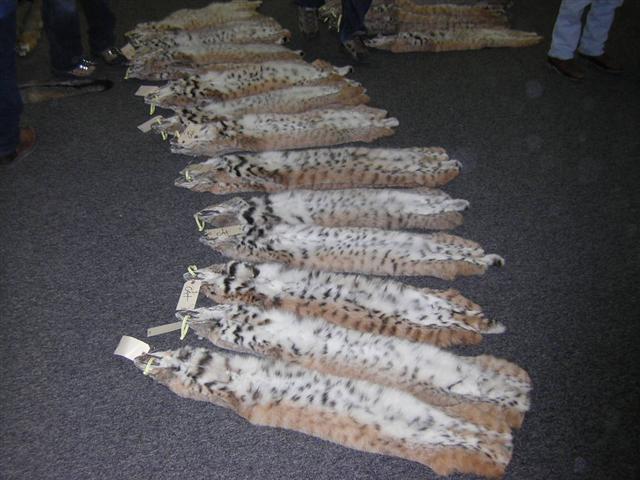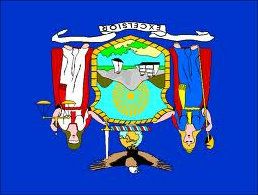So now your cat has dried on the stretcher and its time to remove it. How do you know its dry? The best indicator is the ears. If they are absolutely rock hard, its dry. If you take the pelt off before its dry, it will wrinkle, shrink and shrivel -- never a good thing.
If you stretched your pelt properly and displayed the belly to its best potential, you're ahead of the game and your pelt will get noticed. Now here is where you have the chance to make some extra money.
Comb your pelt good to remove any blood, dirt or pine gum. Now fill a shallow tub with clean Borax. I used to use one of the plastic storage bins from WallyWorld, but recently Mercer Lawing made me one out of sheet metal and I like it better.
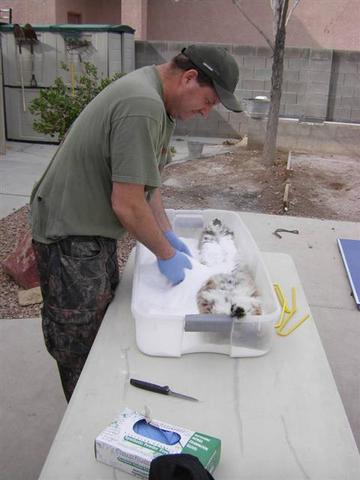
Cover the skin with Borax and rub it into the fur with your gloved hand (use gloves to provide a bit of texture and to keep the Borax from eating your hands up -- its not a harmful chemical, but it is a dissicant, meaning it absorbs moisture, as in the natural oils from your skin). Rub the fur thoroughly with Borax, particularly any greasy spots.
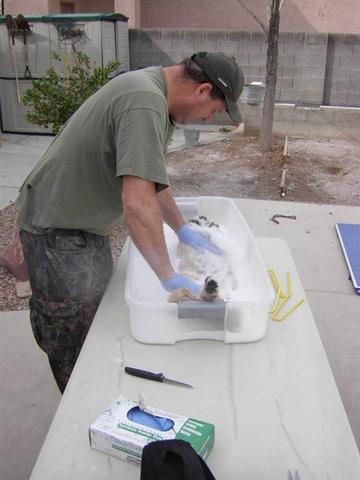
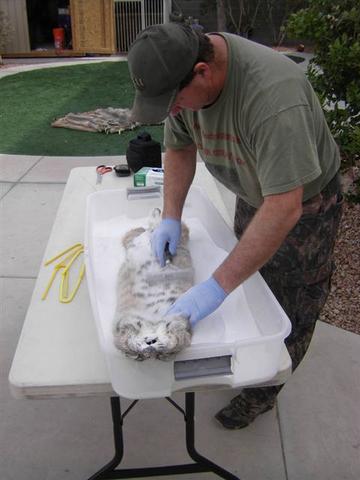
Use your fur comb to continue cleaning the fur and assuring the Borax gets into all the hair. Now take the fur out of the Borax "bath" and shake vigorously. Tap the skin and try to remove all the Borax.
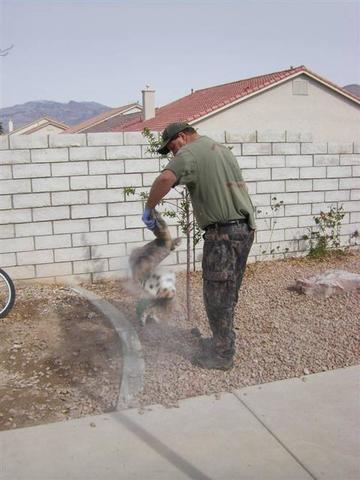
Once you feel you've gotten the Borax out of the fur, its time to take some compressed air to your pelt and blow out every remnant of Borax. Some guys use a compressor, some use a ShopVac turned backwards as a blower. Here is my assistant doing some fox with the ShopVac . . . note the safety equipment.

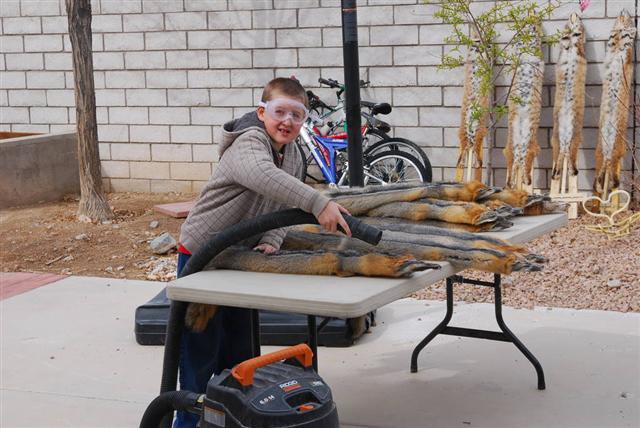
Just to give you a visual . . . here is a cat before it was Boraxed . . .
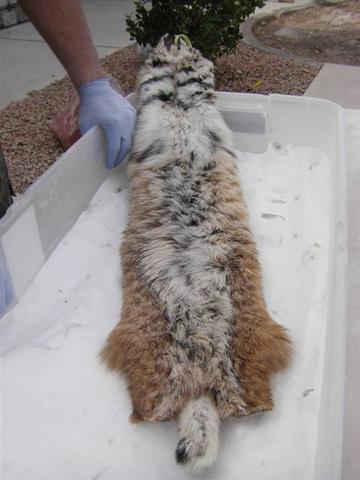
. . . . and here's the same cat after the Borax bath.
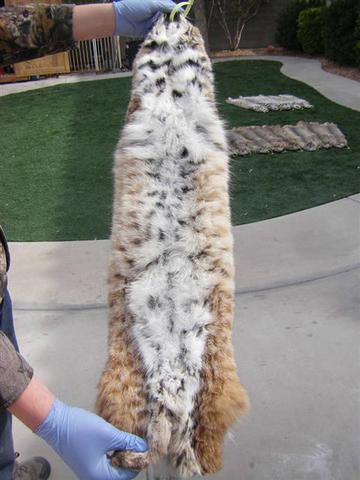
Here's a couple more.
